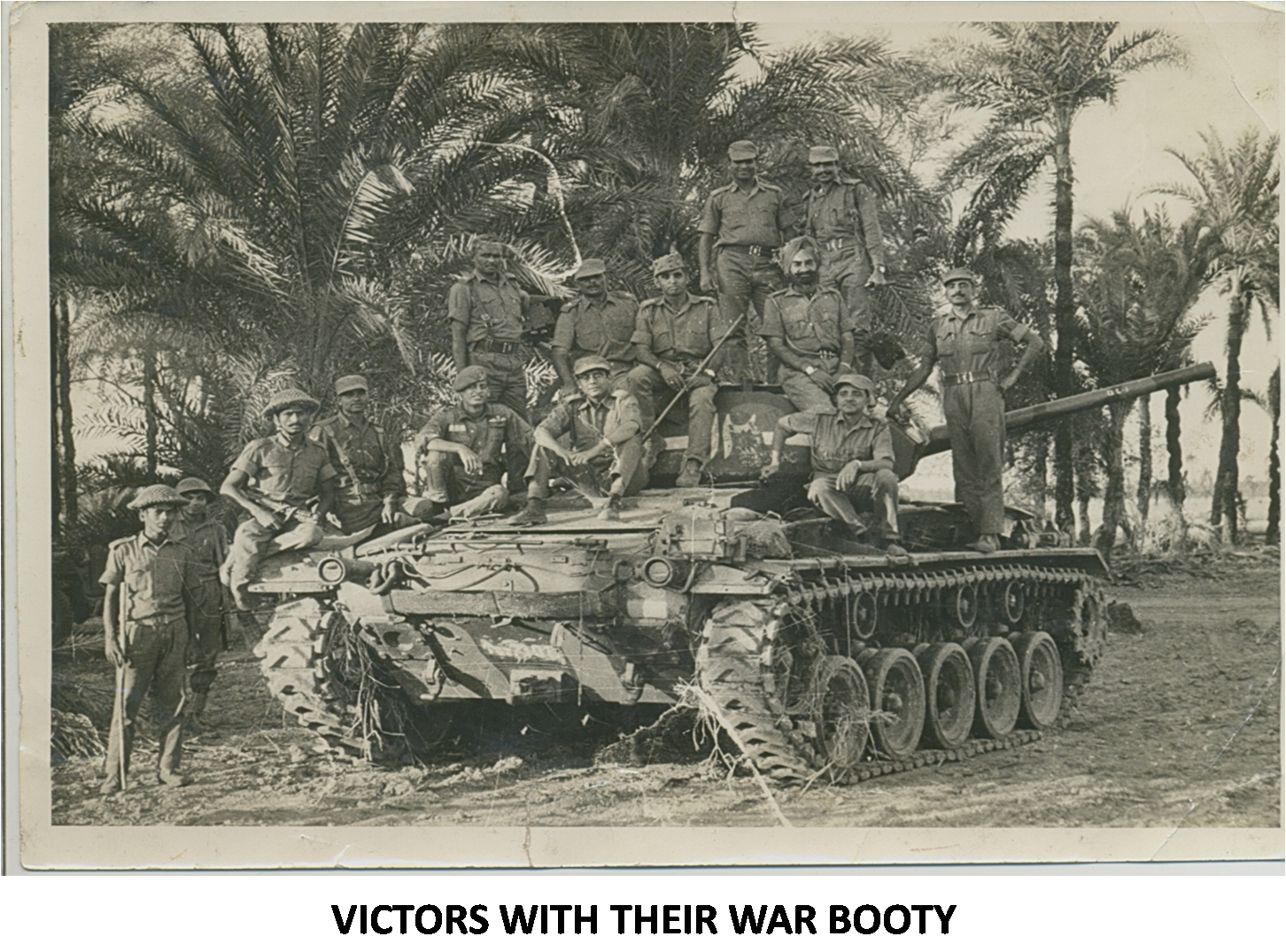The liberation of Bangladesh was possible because of the low morale of the Pakistan armed forces, chiefly caused by the famous Battle of Garibpur in November 1971. Col VY Gidh, VSM (Retd) looks back on one of the finest moments in Indian history
The ‘Lightning Campaign’ to liberate Bangladesh during the Indo-Pak War 1971 was one of the finest moments in Indian history. One of the main factors leading to the fall of the erstwhile East Pakistan was the low morale of the Pakistan Armed Forces. While various factors are attributable to this lowering of morale, one major factor was the famous ‘Battle of Garibpur’ fought in the initial stages of the war.
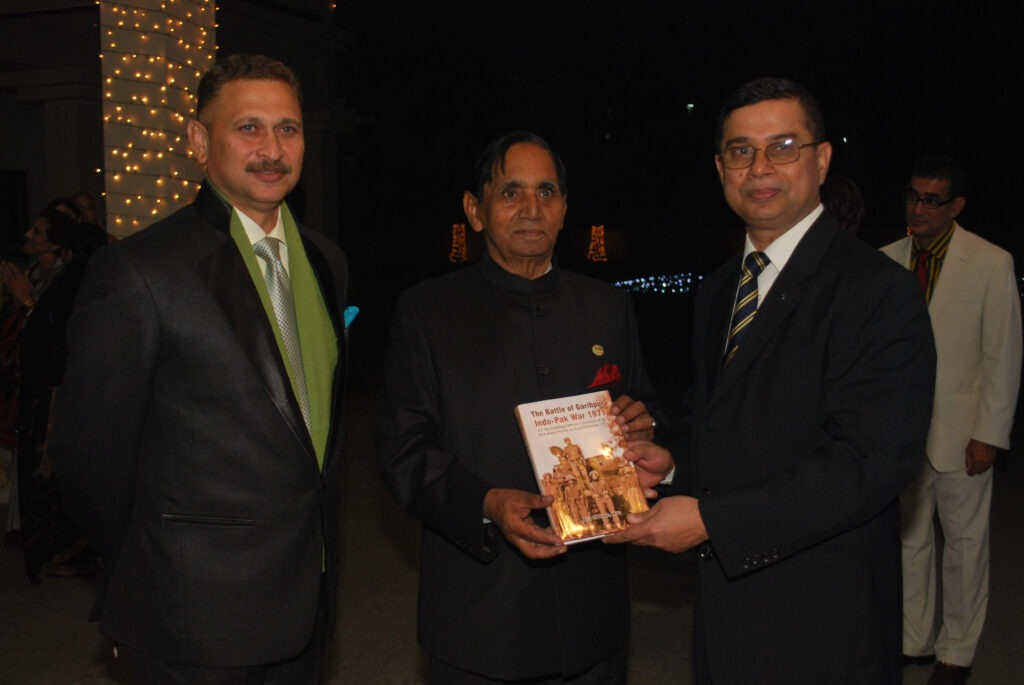
This key battle, fought on November 21-22, 1971 before the Indo-Pak War was officially declared on December 3, 1971, was the first major battle in East Pakistan where a single infantry battalion 14 Punjab (Nabha Akal) supported by a squadron of armour successfully fought a Pakistani brigade.
The situation on the Indo-Pak border was worsening due to genocide by the Pakistan army in early 1971. In view of the military actions by the Mukti Bahini, Pakistani forays and provocations inside Indian territory increased, leading to Indian casualties. 14 Punjab was concentrated near the International Border, where it was tasked to train the Mukti Fauj volunteers. It also had to neutralise an enemy border outpost, Dhopakhali, manned by Pakistani regular troops and border police; so as to successfully dominate the border and ‘No man’s land’ across the Kabadak river. By end November 1971, the enemy actions had reached a level where it became necessary to protect Indian interests by occupying selected enclaves in East Pakistan.
Task
14 Punjab (Nabha Akal), a veteran battalion under the able command of Lt Col (later Brig) RK Singh, was initially tasked to occupy a battalion defended area in Fatehpur, located 6 kms inside East Pakistan, which was well dominated by enemy patrols. The task was later revised ‘to secure area of Garibpur by first light Nov 21, 1971’. 14 Punjab was chosen to advance well inside to secure enemy territory in order to block the Chaugacha-Jessore road and trap the withdrawing enemy from Chaugacha, or prevent any reinforcements joining from Jessore. The unit was supported by artillery, ‘C’ Squadron of 45 Cavalry consisting of 14 PT – 76 tanks, platoon engineers of 102 Engineer Regiment and medical elements.
Importance of Garibpur
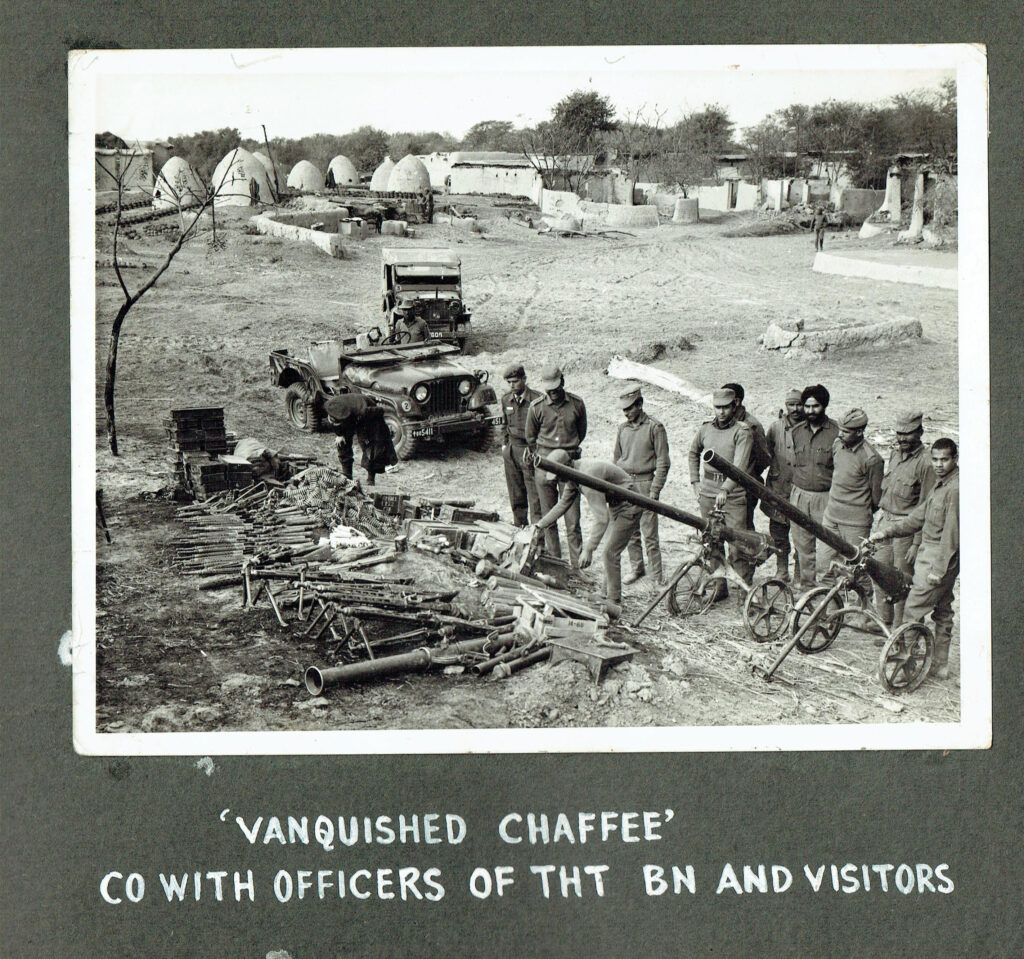
Located in the Boyra salient, Garibpur lies astride the highway from India to Jessore via Chaugacha. The hamlet of Garibpur, located 6km inside East Pakistan, was an important crossroad for both nations. In the event of the full military option having to be exercised, 9 Infantry Division had planned to secure Jessore, and one of its axis of advance was the Chaugacha-Jessore highway. Its control created a road map for Indian forces to eventually defeat Pakistani troops in December 1971.
Reconnaissance
During the morning of November 20, 1971, a strong patrol was sent across the border to reconnoitre a suitable area ahead of Fatehpur. Maj (later Lt Col) AP Vishwanathan, OC Alpha Company, led this patrol which comprised elements of rifle companies to ensure that all these companies would have route guidance on arrival into positions. The move of the unit was supposed to be a surprise, but following a skirmish with an enemy patrol, the Pakistanis were alerted of the impending attack.
Advance to Garibpur
14 Punjab along with ‘Charlie’ Squadron 45 Cavalry equipped with 14 PT-76 tanks crossed the international border formed by the Kabadak river near Bayra and reached the Garibpur position by last light on November 20. There was just enough time for Lt Col RK Singh to issue orders on the radio to his company commanders and the squadron commander, ‘C’ Squadron 45 Cavalry before the early winter set in.
Assessment of the Enemy
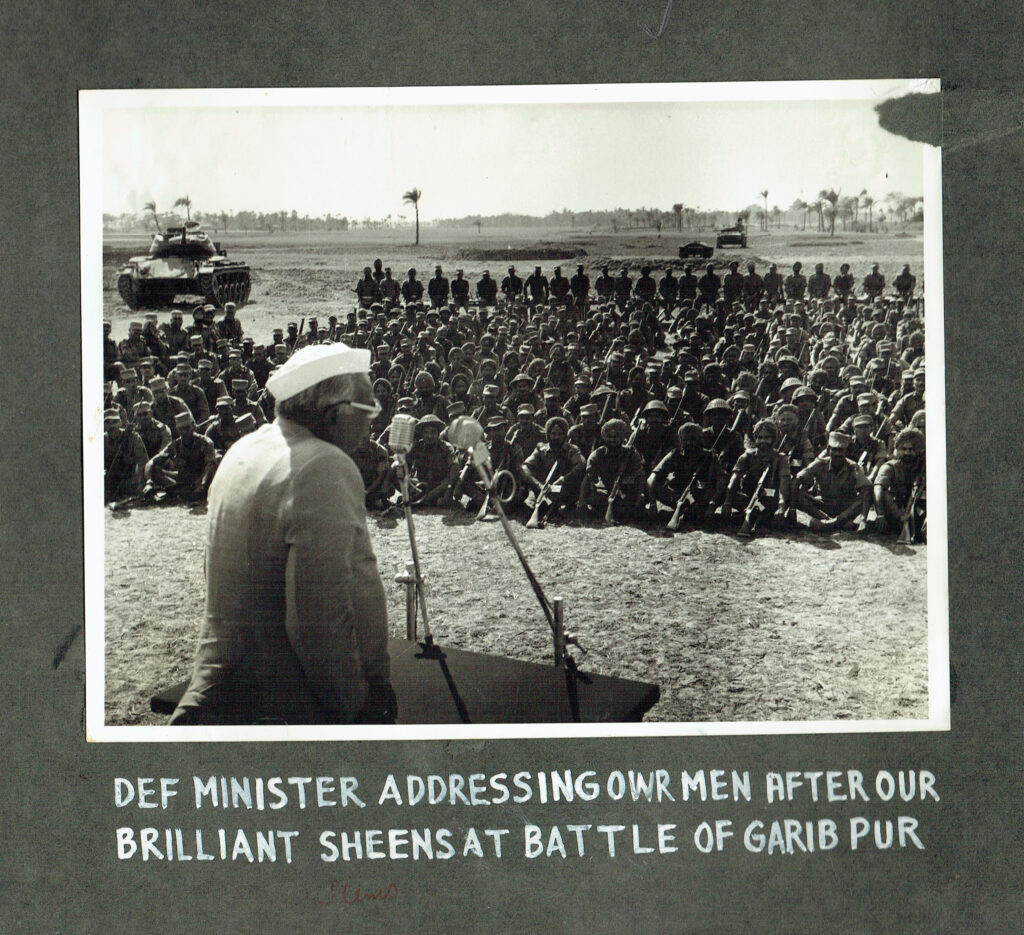
A battalion of Pakistani 107 Infantry Brigade was located at Chaugacha, while the remainder brigade and 9 Infantry Division was in Jessore. Since the Garibpur position would outflank the Pakistani battalion at Chaugacha, there was likely to be a strong enemy reaction. This factor had necessitated the grouping of tanks with 14 Punjab, a fact not known to the enemy.
As the enemy had a secured firm base of Singhajhuli available for launching its attack, enemy activity had to be kept under watch. The enemy had the capability to build up for an attack at night and launch its armour supported by infantry from the North and North East.
Deployment and Preparation of Defences
Companies were allocated their area of deployment. Maj NS Narang, ‘C’ Squadron Commander, 45 Cavalry, was ordered to deploy his tanks in conjunction with two recoilless guns to cover the enemy armour advance from the direction of road Jessore-Chaugacha and the east between Garibpur-South Jagannathpur.
Delta Company under Capt Balbir Singh, with one section MMGs and a recoilless gun occupied a company defended locality in South Jagannathpur to cover the tank approach with elements of armour. Charlie Company under Maj NJS Bains, with a section of MMGs occupied a company defended locality further North at Track Junction near Pitambarpur.
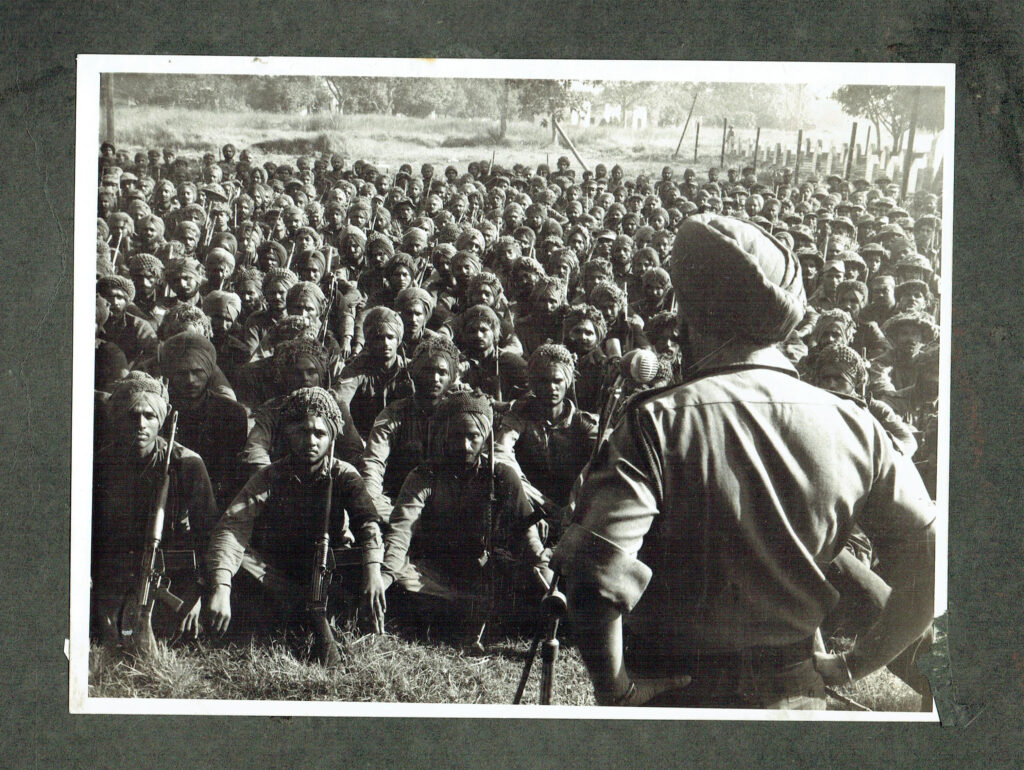
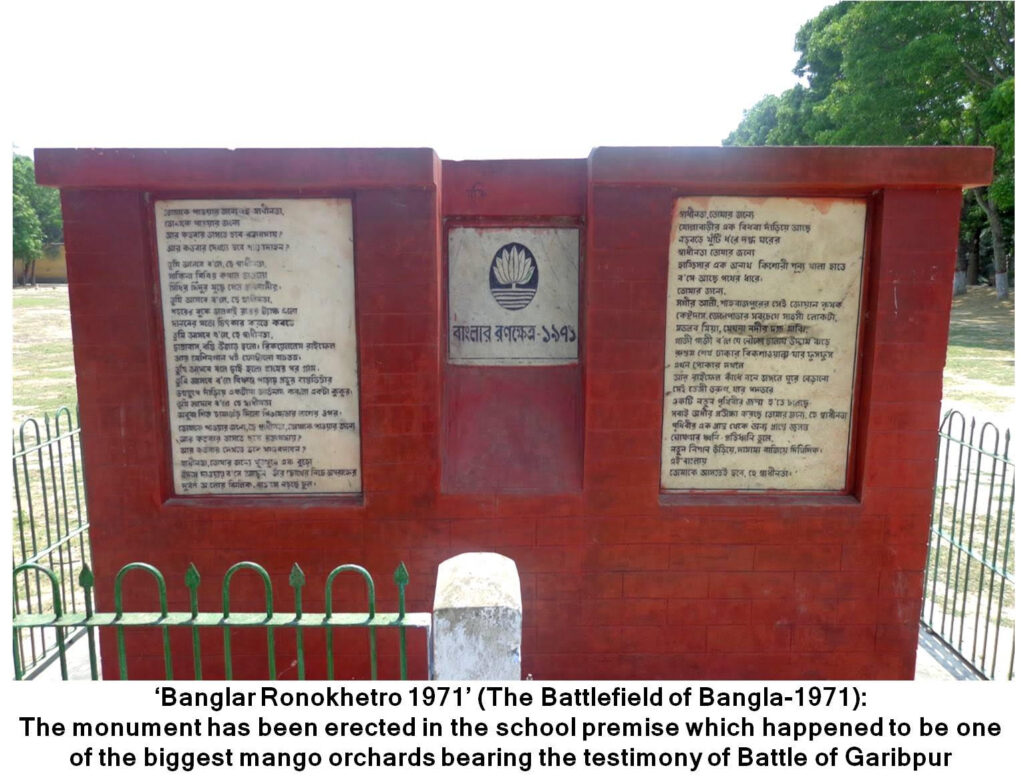
Alpha and Bravo Companies under Majors Vishwanathan and KM Machiah occupied the gap between Çharlie and Delta Companies. Battalion Headquarters was located near Garibpur. By 3am on the 21st, the battalion was in position and the men were feverishly at work to get the defences ready by daylight.
Bold Deployment of Protective Patrol
A patrol with Capt GS Gill, the Commando Platoon Commander and the artillery observer Capt PP Chaturvedi from 6 Field Regiment had been moved North towards Singhajhuli-North Jagannnathpur to cover the enemy movement on road axis Jessore-Chaugacha. In the cold and foggy early hours of November 21, Capt Gill heard the unmistakable sounds of enemy tanks moving south from the Chaugacha-Jessore road. The fog and poor visibility allowed the patrol to remain close to the enemy columns and report on them accurately. Capt Chaturvedi, provided with a fine opportunity, brought down some good concentrations on the closely massed Pakistani columns. Capt Chaturvedi was wounded and was bravely carried by Capt Gill and others till they finally made their way back.
Enemy Reactions
As visualised, the Garibpur position outflanked the Pakistani battalion at Chaugacha and there was violent response by Pakistani 107 Infantry Brigade at first light November 21 to 14 Punjab’s entry across the Bayra salient. It became known later through the prisoners taken that Pakistan’s 6 Punjab, elements of 21 Punjab, 22 Frontier Force and 3 Independent Armoured Squadron of Chaffee tanks made up the attacking force.
At about 3.30am on November 21, our Commando patrol deployed near Singajhuli passed on a message regarding roaring sound of tanks from the direction of Jessore. At 5.30am, Capt Gill reported on radio link that he could see enemy armour and infantry lining up for assault in the Forming Up Place (FUP). All companies were warned to be ready for the impending enemy attack.
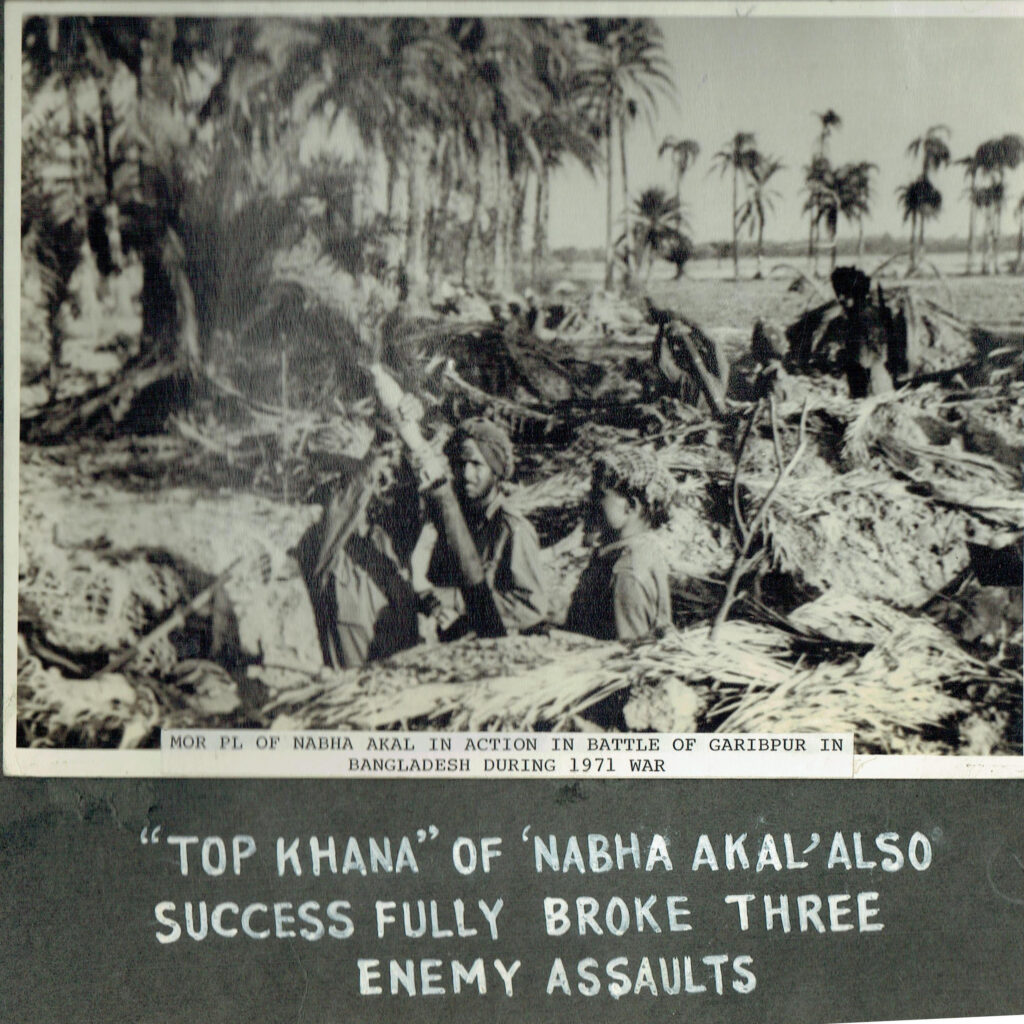
Enemy artillery guns opened up and started pounding our defences to support their assaulting armour and infantry. As dawn broke out on November 21, the enemy launched a brigade-size attack supported by a squadron of armour equipped with M24 Chaffee tanks.
Around 5am, Charlie Company reported enemy activity opposite their defences at Pitambarpur. It became apparent that while an infantry column was making for Pitambarpur, simultaneously a tank based force was approaching Delta Company at South Jagannathpur.
At 6.15am, 6 Punjab of Pakistan Army ferociously charged the Charlie Company location near Pitambarpur through Chaugacha built up area. The enemy encircled the Charlie Company location and a fierce encounter and exchange of fire took place. During the pitch dark night, the enemy had closed near enough to indulge in hand to hand fight.
When the enemy was seen making an outflanking move to surround the company from South, Lt Col RK Singh now ordered the company south to Jehangirpur, for which the Pakistanis would head to take the battalion from the rear. Maj NJS Bains, the Company Commander marshalled his company with great skill and executing a well-organised move almost in the face of the enemy, occupied a new position south of the built up area in the forest vegetation near Jehangirpur.

During the enemy’s outflanking move to attack Charlie Company, when the enemy had closed in within range, they were effectively engaged at the opportune moment by own troops. Sub Malkiat Singh, the Platoon Commander, enthused his men by moving under the enemy’s small arms and artillery shelling at the cost of his life. While hurling a grenade on the charging enemy, he was grievously wounded but continued to fire till he emptied his two light machine gun magazines. He displayed conspicuous gallantry for which he was awarded a Mahavir Chakra (MVC).
When the enemy was very close to own defences, Maj Bains requested for Defensive Fire (SOS) fire on the enemy forming up at the FUP and getting ready for their third attack. Maj Kailash Nath, the Battery Commander ensured an accurate barrage. The enemy fled in confusion.
Main Frontal Attack
The main attack, however, came frontally on Delta, Bravo and Alpha Companies. The infantry-tank attack first came on Delta Company location at South Jagannathpur around 6am. The Pakistani thrust lines having become apparent, thanks to the good work of the patrols operating ahead of the defences, readjustments to muster the recoilless guns (RCLs) and the PT-76 tanks at the required places had been carried out.
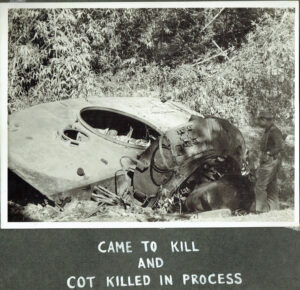
The enemy attacked confidently and two of the enemy tanks were destroyed by own armour. During the tank duel, a charging enemy tank sneaked through the fog close to the Delta Company locality, within 25 metres of the positions. The enemy’s artillery and tank fire had forced the recoilless crew back, but Havildar Lekh Raj, the RCL gun detachment commander, reacted swiftly. He singlehanded loaded the RCL gun himself and fired at the charging tank. In no time, the tank was ablaze. This NCO was awarded a Vir Chakra (VrC).
In another engagement, one of our tanks which had by then moved to cover the developing threat hit another Chaffee which turned out to be the enemy troop leader’s tank. The troop leader attempting to clamber out was shot by Capt Gill. In the close fighting that ensued when the other Chaffees closed in, the Squadron Commander, Maj DS Narang, was hit and killed while directing his tanks standing up in the tank cupola. In the neighbouring troop, Lt Tejinder Singh, the troop leader, was similarly hit and badly wounded.
Under the cover of fog, a tank troop firing their MMGs and guns closed up to Delta and Alpha Company FDLs but own troops steadfastly stuck to their defences giving a determined fight.

By this time, Pakistani 6 Punjab, which had been moving south, closed in through the woods on Garibpur and attacked the Battalion Headquarters area from the West. Under Capt (later Brig) MPS Bajwa, the Adjutant, the Battalion Headquarters and Signal Platoon personnel in depth, engaged the enemy effectively. This assault was broken up by the use of very close artillery support DF (SOS).

By about 8.30am the enemy momentum of assault petered out and it was clear that Nabha Akal with its affiliated units had carried the day. The winter sun, now up through the rising fog, revealed large number of enemy casualties, which included 10 of enemy’s tanks destroyed and three abandoned in good condition.
The Air Battle
Around 9.25am on November 22, 1971, four enemy Sabre aircraft suddenly appeared and started strafing the battalion defences. One of our PT-76 tanks tried to engage the enemy aircraft flying low with its machine gun. This tank was rocketed by all the aircraft and destroyed, while the crew was seriously injured along with some troops on the ground. The second time, at about 2pm the same day, enemy’s three aircraft roared in freely when Maj Kailash Nath, the Battery Commander, got a smoke shot fired in the enemy position at Singhajhuli. This deception paid good dividends as all the enemy aircraft diverted their attack on their troops at Singhajhuli.
Again at about 2.45pm the same day, three more Pakistani aircraft roared in and were having a free run, when suddenly, four Indian Gnat aircrafts from No 22 Squadron based in Kalaikunda appeared in the sky. In the first aerial combat between the two sides since the 1965 War, all three enemy aircraft were shot down in the ensuing dog-fight. Two of the Pakistani pilots, Flying Officers Khalil Ahmed and Parvez Mehdi Qureshi, ejected safely but were captured. The troops on the ground had an uninterrupted view of this air battle, which gave the Battalion a tremendous fillip. Once more the diminutive Indian Gnats flown by the IAF pilots had established mastery over the Sabre jets. The result was that since the interception of the three Sabres over Garibpur, the PAF stopped sending fighter-bombers to support own troops.
Chivalry and Honour of Both Sides
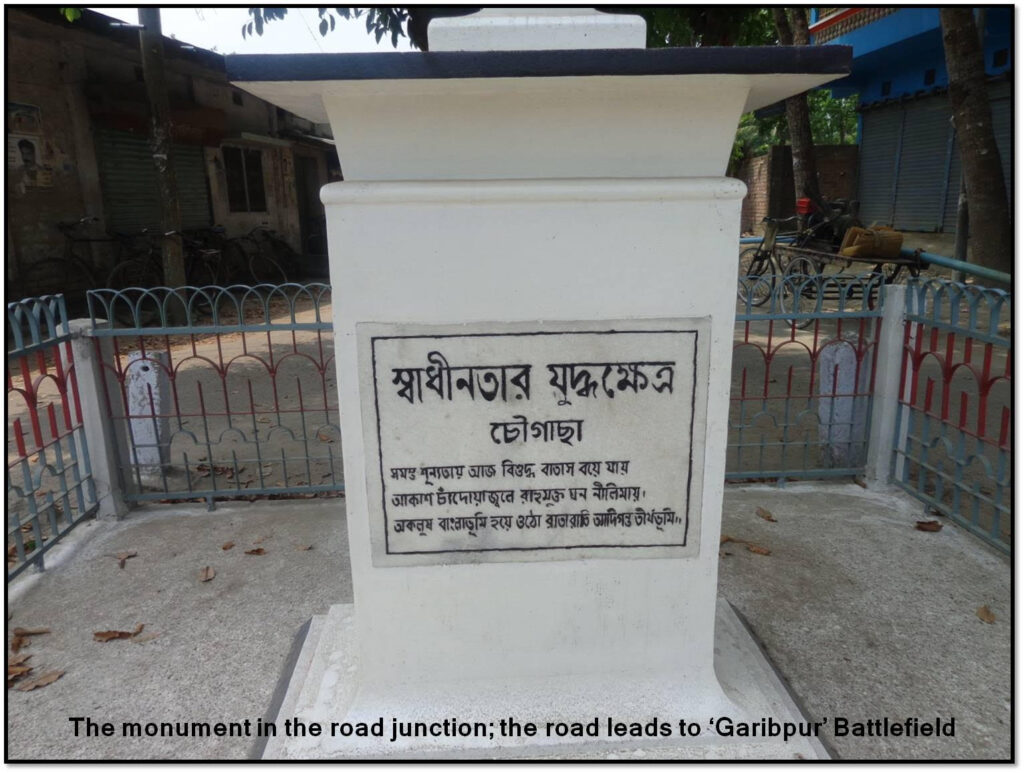
Interestingly, Khalil Ahmed’s elder brother Aziz Ahmed was later one of Pakistan’s most popular High Commissioners to India. Parvez Qureshi, a Sword of Honour at the PAF Air Force Academy, later on became the Chief of Air Staff of the Pakistan Air Force in 1997. Don Lazarus (then a Flying Officer), who had shot him down in 1971, sent him a congratulatory letter to which Qureshi kindly replied and complimented Lazarus for the ‘fight’ shown by IAF pilots that day. Gp Capt Lazarus, who later happened to be our Instructor in the prestigious Defence Services Staff College at Wellington, still preserves this letter. It speaks volumes of soldiering, chivalry and honour on both sides
Importance of the Battle of Garibpur
The Battle of Garibpur had many national and international repercussions and led to interesting results on both sides. Gen Yahya Khan declared a National Emergency in Pakistan and complained to the UN Secretary General, U Thant, about India violating the UN Charter.
The unique battle of one Battalion Group defeating a Brigade attack supported by armour and PAF will go down in the annals of warfare as a classic example. On the tactical level, the battle forced the Pakistanis to vacate Chaugacha without a fight. Later when the war was fully joined in early December, this resulted in own 9 Infantry Division to close up almost halfway upto Jessore, which was its initial objective.
Own losses including the affiliated units were 28 killed and 42 wounded, while four PT-76 tanks were destroyed. During the tank battle, Maj NS Narang got killed while Capt RP Chaturvedi was seriously injured while directing artillery shoots on the enemy.
Thirteen Chaffee tanks were neutralised which included three captured in running condition. Practically the whole of the enemy’s squadron was annihilated. Three enemy aircraft were lost in the air battle while 300 soldiers, including three officers were killed and wounded, and six enemy Prisoners of War were apprehended. A large quantity of arms, ammunition and equipment was captured which included Chinese made automatic weapons and mines.
One of these Pakistani Chaffee tanks captured in running condition by14 Punjab occupies a place of pride in the Punjab Regimental Centre at Ramgarh Cantonment, Jharkhand today.
Honours and Awards
The Battle of Garibpur brought a total of 40 well-deserved gallantry awards to the battalion, its affiliated troops and the IAF. While Lt Col RK Singh was awarded the MVC, the unit earned another MVC (Sub Malkiat Singh) posthumously, two VrCs (Capt GS Gill and Hav Lekh Raj) and two Sena Medals (Capt Balbir Singh and L Nk Sewa Singh). The attached troops won one MVC (Maj DS Narang) posthumously, two VrCs (Nb Risaldar RP Singh, 45 Cav and Capt RP Chaturvedi) and one Sena Medal (Maj Kailash Nath). The three IAF Gnat pilots (Flt Lts RA Massey and MA Ganapathy, and Fg Offr D Lazarus) who shot down the Sabre jets were awarded a VrC each.
Ordering of Commission
After the War, Pakistan ordered a Commission under Chief Justice Hamoodur Rahman on the defeat of the Pakistani Army during the 1971 Confict. An extract of the report mentioned that Brig Mohammad Hayat, former Commander 107 Brigade, 9 Infantry Division, East Pakistan be tried for by court martial for not formulating a sound plan for the defence of the Jessore fortress and failing to properly plan and command the brigade counter-attack at Garibpur.
Memorable Visit to Bangladesh
During Vijay Diwas 2013, Brig RK Singh was part of an Indian delegation consisting of 1971 War veterans which visited Bangladesh, where he got an opportunity to visit the battlefields at Garibpur after 42 years! The people of Garibpur and surrounding areas are ever grateful for the contribution and sacrifice of the Indian soldiers. A small memorial with an epitaph commemorating the Battle of Garibpur is located astride the road leading to Garibpur,a tiny and predominantly agricultural hamlet. Another monument has been erected near a mango tree in an open patch in a school premises to commemorate the martyrs – both Mukti Bahini and Indian soldiers of the Liberation War.
Some Bangladesh officers attending the Staff College Course at Wellington, a few years ago, informed me that the Battle of Garibpur is enacted by their battalions as part of an exercise organised for troops to draw many useful lessons. They requested for some material and original photographs of the Garibpur battle, which was later sent to them. There is a war museum at Jessore Cantonment which contains artefacts, photographs and other items from the ‘Liberation War’.
Book on CO’s Reminiscences of the Battle
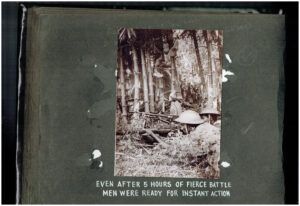
Brig RK Singh had written a book, ‘The Battle of Garibpur, Indo-Pak War 1971’ in 2014, which is the Commanding Officer’s account and personal reminiscences of the Battle of Garibpur. Inclusion of original photographs of the battle area, the air battle at Boyra and the author’s recent visit to Bangladesh enhance the quality of the book. One of the photographs depicts 14 jubilant officers and men of the unit and attached troops atop a captured Pakistani Chaffee tank bearing number 14 in Urdu.
Brig RK passed away in February 2016. During the recent visit of the Bangladesh PM, Sheikh Hasina to India in April 2017, Sub Malkiat Singh, MVC (Posthumous) was one of the martyrs of the 1971 Liberation War, whose family was honoured by the PMs of both the countries. The Commanding Officer and Subedar Major of the unit were invited for the ceremony in New Delhi on April 8, 2017.
Conclusion
The Battle of Garibpur was a significant battle in which the troops of 14 PUNJAB Infantry Battalion Group exhibited rare courage, grit and determination. Though the battle was fought mainly by 14 Punjab, it was the other supporting units like ‘C’ Squadron 45 Cavalry, the Engineers and Artillery; and the IAF which played a crucial role in its success. It was the first main battle of the 1971 War, which was a significant military victory that blunted the enemy’s counter-attack capability. This eventually paved the way for the Indian victory over Pakistan 49 years ago. However, the unit was denied a well-deserved award of Battle Honour ‘Garibpur’ Battle, since it was fought prior to commencement of hostilities on December 3, 1971.



